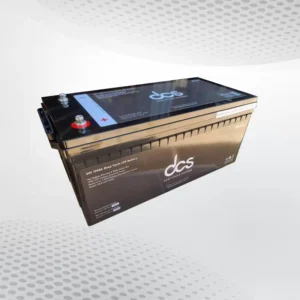The Holden Cruze coolant reservoir plays a crucial role in maintaining the engine’s optimal temperature by storing excess coolant fluid. Over time, the coolant reservoir may become faulty, leading to potential engine overheating. This guide provides a comprehensive overview of how to inspect and replace the coolant reservoir in a Holden Cruze, ensuring the vehicle’s cooling system functions efficiently.
Understanding the Role of the Coolant Reservoir
The coolant reservoir, often called the overflow bottle or coolant tank, is an expansion chamber for the engine’s coolant. As the engine operates and its temperature rises, the coolant expands due to heat and is channelled into the reservoir. This excess coolant is temporarily stored in the reservoir to maintain optimal pressure levels within the cooling system.
As the engine cools down, the coolant contracts and is drawn back into the radiator, ensuring a consistent and balanced coolant level. This cyclical process helps prevent overheating and freezing of the engine by maintaining the proper coolant levels and pressure.
Additionally, the coolant reservoir allows for easy monitoring and refilling of coolant, contributing to the overall efficiency and health of the vehicle’s cooling system. The reservoir’s marked ‘maximum’ and ‘minimum’ levels aid in maintaining the correct amount of coolant in the system.
Identifying Signs of a Faulty Coolant Reservoir
A faulty coolant reservoir can exhibit several symptoms that signal the need for attention. One of the most noticeable signs is the presence of coolant puddles beneath the vehicle, indicating a leak. Visual inspections may reveal cracks, warping, or other physical damage to the reservoir. Frequent refilling of the coolant despite no apparent leaks can also suggest an issue, as it might evaporate through minor, unnoticed fractures.
A consistently high reading on the engine temperature gauge indicates the cooling system is compromised. These signs should prompt an immediate inspection to prevent further complications.
Tools Needed for Inspecting and Replacing the Coolant Reservoir
Before inspecting or replacing the coolant reservoir, it is vital to gather all necessary tools. A set of spanners is essential for loosening and tightening bolts. Pliers are useful for gripping and removing hoses, while a screwdriver set will help with various screws and clamps.
When draining the system, a clean container is needed to catch and store the old coolant. A funnel will ensure an easy and spill-free refill of the coolant. Safety gloves and goggles are crucial to protect against accidental spills and exposure to the coolant, providing a safe working environment.
Safety Precautions Before Starting the Inspection
Safety gloves and goggles should be worn at all times to guard against accidental spills and exposure to coolant.
Ensuring the Engine is Cool
The engine must be completely cool before starting any inspection or replacement tasks to avoid the risk of burns.
Ventilating the Work Area
A well-ventilated workspace is essential to prevent the inhalation of harmful coolant fumes.
Disposing of Coolant Properly
Dispose of old coolant by local environmental regulations to avoid pollution.
Keeping Tools Organised
Having tools and parts organised within reach helps streamline the inspection and replacement process, reducing downtime.
Checking for Other Issues
Inspect surrounding components, such as hoses and clamps, for any signs of wear or damage that might need addressing.
Locating the Holden Cruze Overflow Bottle
The Holden Cruze Overflow Bottle is typically located within the engine bay on the passenger side. This component is usually made from translucent plastic, making it easy to identify and monitor the coolant level. The reservoir is near the radiator, providing a convenient location for overflowing excess coolant.
Marked ‘maximum’ and ‘minimum’ level indicators are visible on the side of the reservoir, aiding in the easy assessment of the coolant level without needing to open the cap. This strategic placement ensures that the coolant can easily flow between the radiator and the reservoir as required, maintaining an efficient cooling system. The design and positioning of the coolant reservoir also allow for straightforward access during inspections and maintenance.
Inspecting the Coolant Reservoir for Damage
Begin by visually examining the coolant reservoir for any visible signs of damage, such as cracks, warping, or leaks. Please pay close attention to the area around the cap to ensure it is adequately sealed. Inspect the hoses connected to the reservoir for any signs of wear, damage, or loose connections that might contribute to coolant loss.
Additionally, check for any discolouration or residue around the reservoir, which can indicate a slow leak. Gently squeeze the hoses to check for any brittleness or weakness, which might require replacement.
Draining the Coolant from the System
To begin draining the coolant, place a clean container beneath the radiator’s drain plug to catch the old coolant. Ensure the vehicle is parked on a level surface to facilitate thorough drainage. Next, carefully loosen the drain plug and allow the coolant to flow into the container, avoiding spillage.
Once the coolant has been completely drained, securely tighten the drain plug to prevent leaks. Proper disposal of the old coolant is essential and should be done according to local environmental regulations to avoid contamination.
Removing the Old Coolant Reservoir
After draining the coolant, detach the hoses connected to the old coolant reservoir. Utilise the necessary tools, such as pliers and spanners, to carefully loosen and remove the hose clamps and bolts securing the reservoir.
Ensure all hoses are entirely disconnected to prevent any damage during removal. Gently lift the coolant reservoir from its mounting location within the engine bay. It is essential to handle the reservoir cautiously to avoid spilling any residual coolant.
If the reservoir is particularly tight or difficult to remove, it may be helpful to wiggle it slightly to loosen it from its position. Once removed, inspect the surrounding area for any remaining debris or coolant residue that may need to be cleaned before installing the new reservoir. This step ensures a clean and secure fitting for the new component.
Installing the New Holden Cruze Coolant Tank
Gently place the new Holden Cruze Coolant Tank into its designated spot within the engine bay, ensuring it aligns perfectly with the mounting points.
Securing the Reservoir
Utilise the appropriate bolts or clamps to secure the new reservoir firmly. It is crucial to tighten these components adequately to avoid any movement or displacement during vehicle operation.
Connecting the Hoses
Attach the hoses to the new reservoir, ensuring all connections are secure and tight. Properly fitted hoses are essential to prevent future leaks and ensure the efficient flow of coolant.
Checking the Reservoir Cap
Verify that the cap fits snugly on the new reservoir, creating an airtight seal. An improperly sealed cap can lead to coolant evaporation and potential system inefficiencies.
Inspecting the Installation
Conduct a thorough inspection of all fittings and connections to confirm that the reservoir is installed correctly. Attention to detail during this step can prevent potential issues down the line.
Testing for Stability
Gently shake the reservoir to ensure it is firmly in place and does not exhibit any wobbling or looseness. Stability is crucial for the reservoir’s long-term performance and reliability.
Refilling the Coolant System
Using a funnel, slowly refill the system with the recommended type of coolant until the reservoir reaches the ‘maximum’ level mark. Ensuring using the specified coolant mixture, often a blend of water and antifreeze, is crucial for maintaining optimal engine performance and longevity. It is advisable to consult the vehicle’s owner’s manual for precise coolant specifications to avoid potential engine damage.
Pour the coolant slowly to prevent the formation of air bubbles, which can disrupt the cooling system’s efficiency. As the coolant is added, periodically check the reservoir’s level, ensuring it remains between the ‘minimum’ and ‘maximum’ indicators. This gradual process helps achieve an accurate fill level without overfilling, which could lead to overflow when the engine heats up.
After filling the reservoir to the correct level, securely fasten the cap to create an airtight seal, preventing coolant evaporation and contamination. Monitoring the coolant level over the next few days of vehicle operation is also essential, as the level may settle, necessitating a top-up. Additionally, always keep a spare bottle of the recommended coolant mixture handy for any unforeseen top-up needs, especially during long drives or extreme weather conditions. This ensures the cooling system remains in top condition, safeguarding the engine against overheating or freezing.
Bleeding the Coolant System to Remove Air Pockets
Air pockets trapped within the cooling system can lead to inefficient cooling and potential engine overheating.
- To effectively bleed the system, start the engine and allow it to reach its normal operating temperature. With the radiator cap removed, observe as the coolant begins to circulate.
- As the engine heats up, the thermostat opens, and air trapped in the system starts to escape, visible as bubbles rising to the surface.
- It is essential to keep a close eye on the coolant level during this process, adding more as needed to maintain the correct level.
- Continue monitoring the system until no more air bubbles are visible, indicating that all air pockets have been successfully purged.
- Once the bleeding process is complete, securely fasten the radiator cap to ensure an airtight seal.
- This procedure helps maintain the cooling system’s optimal performance by ensuring that the coolant can flow freely without obstructions caused by air pockets.
Draining The Old Coolant
Replacing the coolant reservoir involves careful steps, such as draining the old coolant, removing the faulty reservoir, and installing a new one. To ensure optimal performance, it is essential to use the correct type of coolant and follow the manufacturer’s specifications. After installation, bleeding the system to remove air pockets is a key step to maintaining the cooling system’s efficiency.
Routine maintenance, including inspecting the reservoir and other cooling system components, can detect issues early and prevent more significant problems. Staying vigilant about the vehicle’s coolant levels and system condition can ensure smooth and efficient operation. Proper disposal of old coolant and adherence to local environmental regulations are also essential for responsible maintenance practices.
Ultimately, attention to detail and regular upkeep can keep the Holden Cruze running smoothly, providing reliable and efficient performance for years.
Conclusion
Proper Holden Cruze Overflow Bottle maintenance is crucial for the vehicle’s overall health and performance. Ensuring the coolant reservoir is in good condition and functioning correctly helps avoid costly repairs and extends the engine’s life. Regular checks and timely replacement of the reservoir can prevent the vehicle from experiencing issues such as overheating, which could lead to severe engine damage. Using the appropriate tools and following safety precautions during inspection and replacement tasks can make the process more efficient and safer.
FAQs
What Type Of Coolant Should Be Used For The Holden Cruze?
The recommended type of coolant, usually a specific blend of water and antifreeze, is found in the vehicle’s owner’s manual. Using the correct coolant mixture ensures optimal engine performance and longevity.
How Often Should The Coolant Reservoir Be Inspected?
Inspecting the coolant reservoir every six months or during routine vehicle maintenance is advisable. Regular inspections can help identify cracks, leaks, or other issues that may compromise the cooling system.
What Should Be Done If A Holden Cruze Overflow Bottle Persists After Replacing The Reservoir?
Persistent leaks after replacing the Holden Cruze Overflow Bottle might indicate issues with other components. Inspect the hoses, clamps, and radiator for any signs of damage or wear that could be causing the leak.
| Related Business Listings |
| Contact Directory |
| Local Business Profiles |




